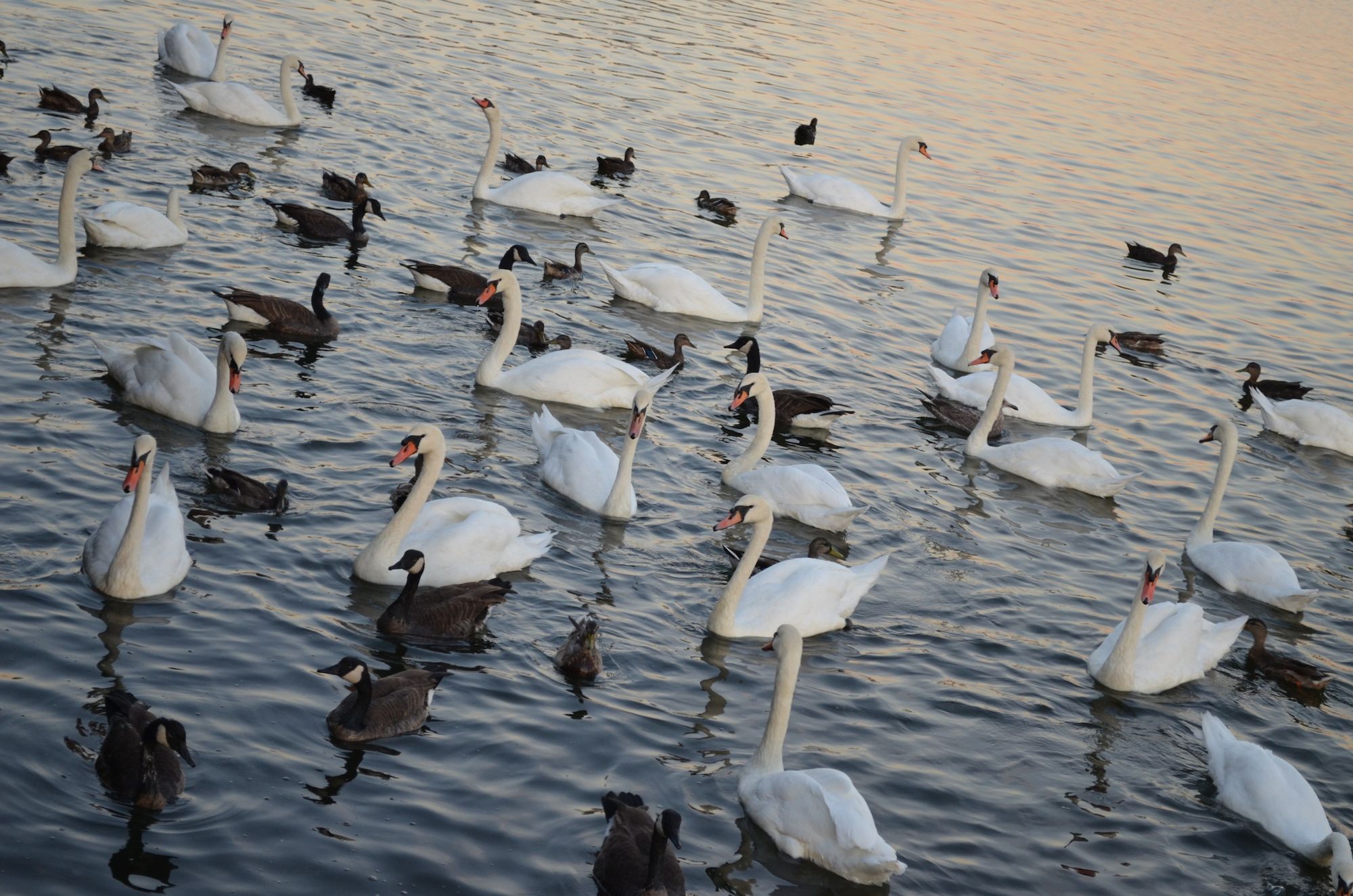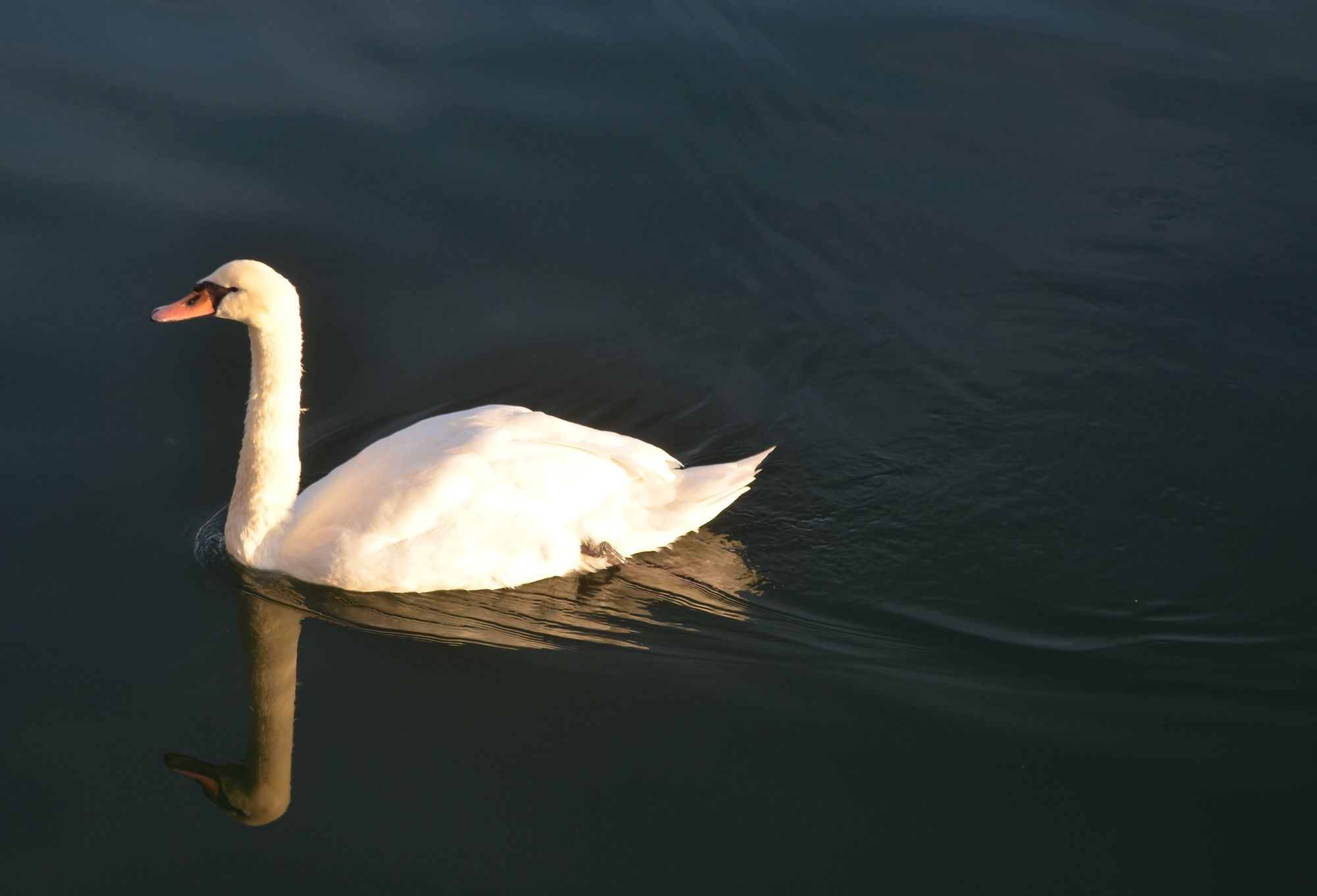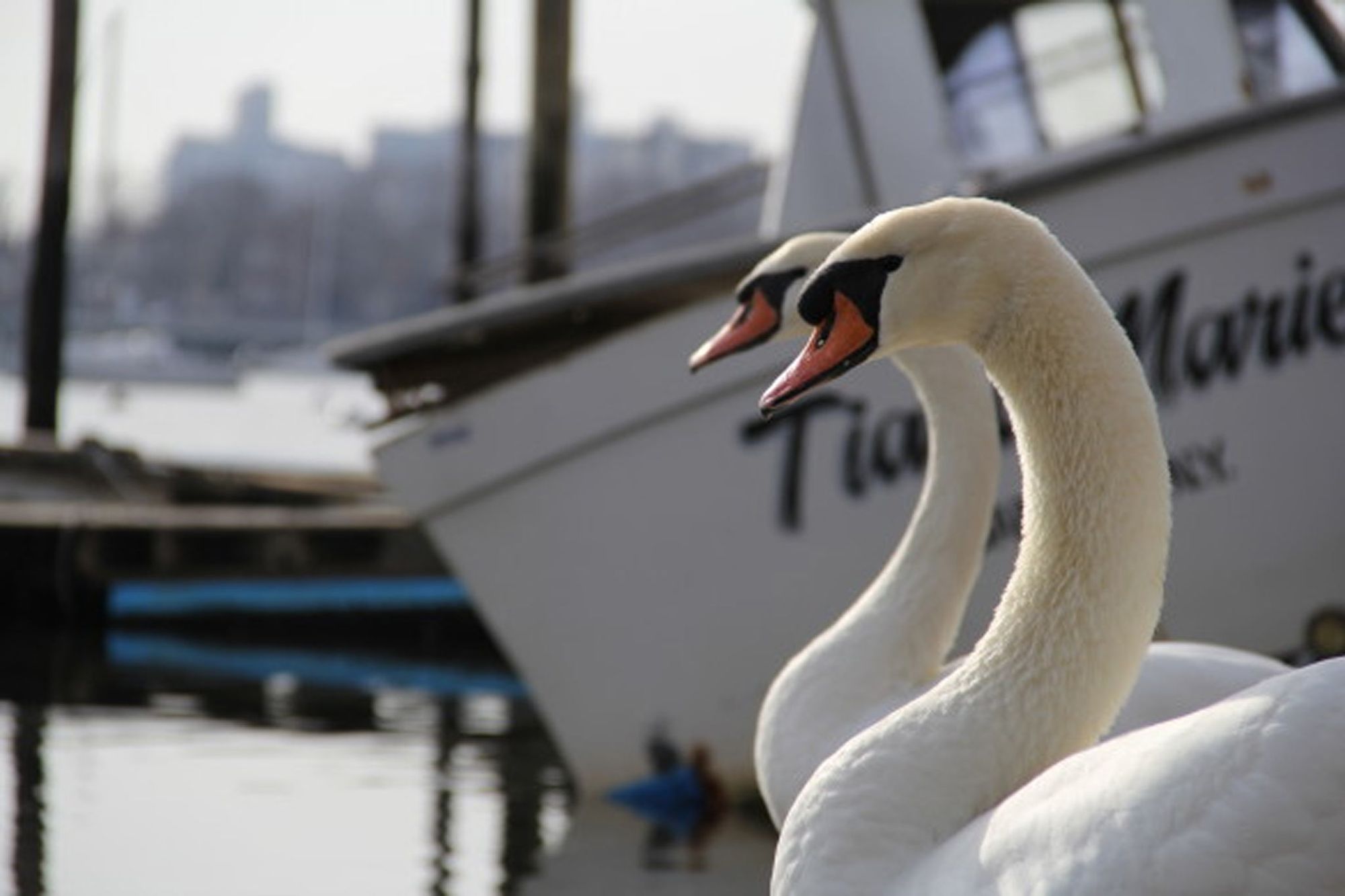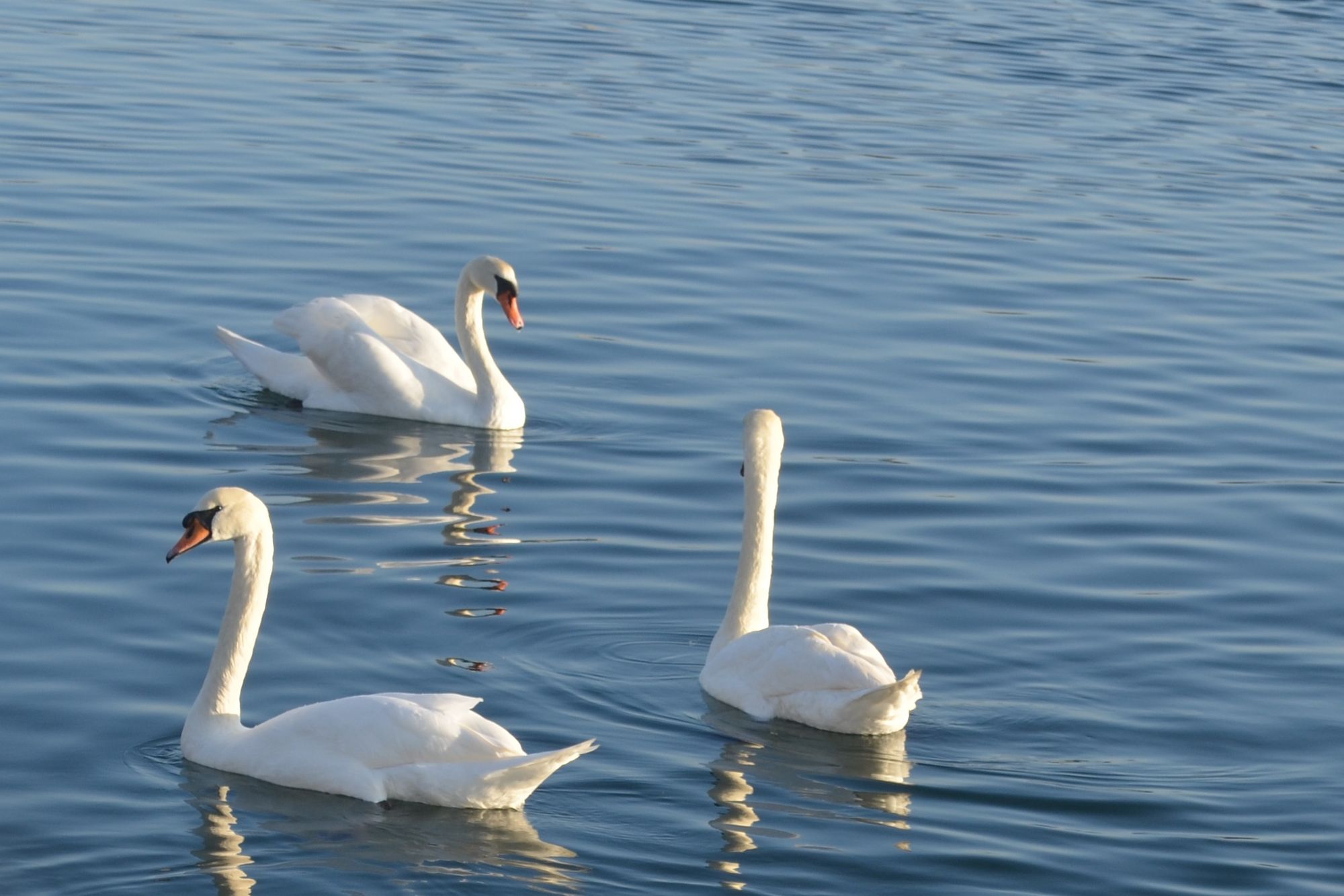Conservationists Say Plan To Eliminate Sheepshead Bay’s Swans Is Based On ‘Weak’ Science

Sheepshead Bay’s swans have long been a target for extermination by the state. But a growing body of prominent environmentalists and conservationists say the evidence against these snow-white waterfowl – an indelible part of the neighborhood’s charm for generations – is the result of “weak and faulty science.”
For two years, New York’s Department of Environmental Conservation (DEC) has mounted a campaign to eliminate, or at least significantly reduce, the estimated 2,200 mute swans residing in New York by resettling the birds or, if necessary, by killing them outright. In declaring the swans — first introduced to North America from Europe in the 1800s — an invasive species and branding them a menace to the environment, New York has followed the lead of a number of other states that have done the same.
Sheila Bolin, president of the Regal Swan Foundation and the Humane Society of the United States, said the DEC, like those other states, is relying on very shaky data.
“There is little to no real science behind DEC’s claims,” Bolin said. “Governor Cuomo needs to stop New York’s DEC from controlling, killing or managing the swans until the agency conducts a fair, unbiased environmental impact assessment.”
The DEC confirmed that no formal assessment was ever done. Bryan Swift, the agency’s statewide waterfowl specialist, told the New York Times that while he understands why the issue is controversial, he claims the data is irrefutable.
“I knew there would be a lot of passionate defenders of swans, but we [DEC] can’t base our management policies just on the aesthetics of a bird when it has such negative impacts,” he said.

Since 2014, the DEC has issued two swan management plans in which it cites a laundry list of swan offenses: they are an invasive species and rapidly displace native wildlife, degrade water quality, destroy submerged aquatic vegetation necessary for native fish and waterfowl, are highly aggressive toward people and fellow water residents, and are a potential hazard to aircraft.
Local legislators, including Assemblyman Steven Cymbrowitz, have pushed back with legislation that would bring the DEC to the drawing board for further study, but Governor Cuomo has repeatedly wielded his veto pen.
Bolin and Brian Shapiro, the New York State director of the Humane Society, took particular issue with several of DEC’s claims.
“The fact is, current research disputes that. Mute swans do not displace or disrupt other waterfowl species, but instead generate an increase in other native waterfowl,” Bolin said. “In all the years of studying mute swans in many environments, I’ve never seen them kill other species, including ducks. They chase, especially if other species come near their babies. This is normal defensive, not aggressive, behavior.”
Shapiro argued that labeling the birds as an invasive species is an outdated idea.
“Mute swans have been in New York since the late 1800s, but their population is only 2,200. What’s more, the populations of all three of New York’s sub-populations of mute swans are stable or declining,” he said.
Shapiro also dismissed the claim that mute swans pose a hazard to aircraft.
”Mute swans do not fly often and do not exhibit flight characteristics associated with hazards to aircraft. This allegation undoubtedly comes from problems associated with urban Canada geese,” he said.

Hugh Raffles, Professor of Anthropology at the New School, took direct aim at DEC’s allegations that mute swans consume vast amounts subaquatic vegetation, which they say dangerously reduces food and shelter for native fish and wildlife. In a 2014 New York Times op-ed, Professor Raffles wrote: “since they [mute swans] compose about half of one percent of New York’s more than 400,000 waterfowl, the impact on the state’s ecosystem is minor.”
His op-ed went further and took the entire DEC report to task. The report, he said, produced some “markedly inconclusive science. The threat from New York’s swans appears largely speculative.” He called the plan a case of “bureaucratic overreach” and he shifted the blame for New York’s environmental problems elsewhere.
“Sea-level rise, legislative loopholes, untreated sewage discharge and contaminated runoff from agriculture and adjacent development continue to threaten our vital ecosystems,” he wrote, “not the birds.”

The issue of mute swans has raged for many years across the United States, with strong advocates on both sides of the debate. But remarkably, questions about the scientific validity of New York’s study are nearly identical to questions asked by environmentalists in other states.
One of the more famous cases took place in 2003. The Maryland Department of Natural Resources, based on what it said was a “scientific study,” proposed to eliminate half its mute swan population, about 1500, primarily by shooting individual swans and nesting pairs.
Jonathan Lovvorn, now a senior vice president & chief counsel for Animal Protection Litigation at The Humane Society of the United States, co-wrote an article at the time in which he vehemently criticized Maryland’s recommendations because “scientific validation was conspicuous by its absence.”
Indeed, Lovvorn said, although Maryland’s mute swan plan concluded that killing half the total swan population was necessary, the state freely admitted that “there was no evidence to suggest the swans were causing any impact to agriculture in Maryland.”
Shapiro agrees. “That’s a good example of how the science on this issue is incomplete,” he said, adding that whatever affects New York’s 2,200 swans have on the environment is “just a drop in the bucket compared to human-generated pollution and habitat destruction.”
Environmentalists also pointed to an International Swan Symposium held in Maryland in 2014 as further evidence that the DEC is falsely maligning the swans.
At that meeting, swan specialists from around the world presented papers claiming mute swans, in contrast to DEC’s and other state’s claims, were sentinel and thus benefitted the environment in which they swim. The fact is, said Bolin, who spoke at the symposium, mute swans alert wetland and waterfowl biologists to the presence of high levels of heavy metals in the water such as copper and lead as well as micro-organisms that can sicken or kill other species.
“They help the environment not damage it,” she concluded.

Beyond the science, some are raising more bottom line questions, claiming that the campaign to reduce mute swans in New York has less to do with the environment and more to do with revenue.
The DEC’s swan management plan – supported by conservation organizations such as the Audubon Society and Cornell University – was done in partnership with its Division of Fish, Wildlife, and Marine Resources. The primary funding source for the division is the Conservation Fund, which consists of hunting, fishing and trapping license fees and miscellaneous other fees and fines collected by the division.
This led Barry Kent Mackay, senior program associate for Born Free U.S.A., a national animal advocacy organization, to say “Follow the money.
“Mute swans do not qualify as game,” he explained. “They’re big, bumbling, and stationary and not good for hunting. On the other hand, government wildlife biologists are urging the introduction of more trumpeter swans to the eastern United States. Why? Because these birds are migratory and therefore ripe for hunting. That means more money will be generated for the state from fees for hunting permits and more.”
A DEC spokeswoman said the agency hopes to have a final plan out in the coming weeks, and that population control recommendations would depend on regional differences, adding that lethal methods would be used “only as a last resort.”
A spokesperson for Assemblyman Cymbrowitz said he is considering reintroducing his bill, but no decision has been made yet.




